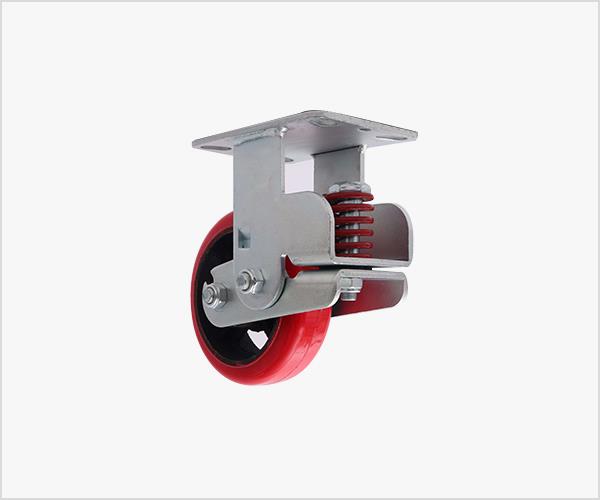The shock-absorbing casters produced by Qingdao Fushengde Plastics Co., Ltd. have the characteristics of impact resistance, corrosion resistance and strong practicability. During the production process, our company will conduct various tests and inspections on casters.
Rolling resistance and rotation resistance test:
When the caster moves or wants to control the direction of its movement, force must pass through the object to reach the caster and overcome a certain resistance. The resistance depends on: weight, wheel diameter, wheel material, wheel surface shape, and caster rotation field conditions.
Resistance performance test:
When testing this performance, the casters should be kept dry and clean. The caster should be placed on a metal plate insulated from the ground, and both sides of the caster should be in contact with the metal plate, and 5-10% of the nominal load should be installed on the caster. Insulation resistance tester (nominal open circuit voltage 500V, measuring resistance fluctuation within 10%, product loss not exceeding 3W) is used to measure the resistance between the caster and the metal plate. The resistance of conductive casters should not exceed 104 Euros, and the resistance of anti-static casters should be between 105 Euros and 107 Euros.
Impact test:
Any item, because transportation, use, storage and other conditions can produce collision and vibration, so the product cannot be used normally for a period of time, the object, because their type is large, the weight is often easy and other characteristics, and the bottom casters determine whether the object should be stabilized Has good impact resistance.
Static load test:
The casters of the object should always be stationary on the ground, but this is almost a purely theoretical state. The caster will leave the rugged ground briefly, or pass through thresholds, tracks, and pits. Therefore, when they are suddenly overloaded or three of the four casters fall to the ground, they must bear the weight of the entire object.
Through the above tests, we can find that even a continuous caster with simple appearance and small scale must pass these tests to become a qualified continuous caster product. Of course, in the production process of products, we should follow the above-mentioned series of testing methods step by step. This is not only to ensure the quality of the products, but also to be responsible for our products.

Related News
- What is the application range of heavy duty casters and how should daily maintenance and inspection be done?
- Instructions and precautions for leveling casters
- Knowledge about the product warranty period and maintenance of industrial casters
- Purchase knowledge of stainless steel casters
- The main application fields of industrial universal wheels and the selection of casters
- How to overhaul the brake casters?
- The composition of the accessories of the trolley casters and the carrying weight
- Features of silent casters and introduction of accessories
- What is the market demand for polyurethane casters? What are the development prospects?

